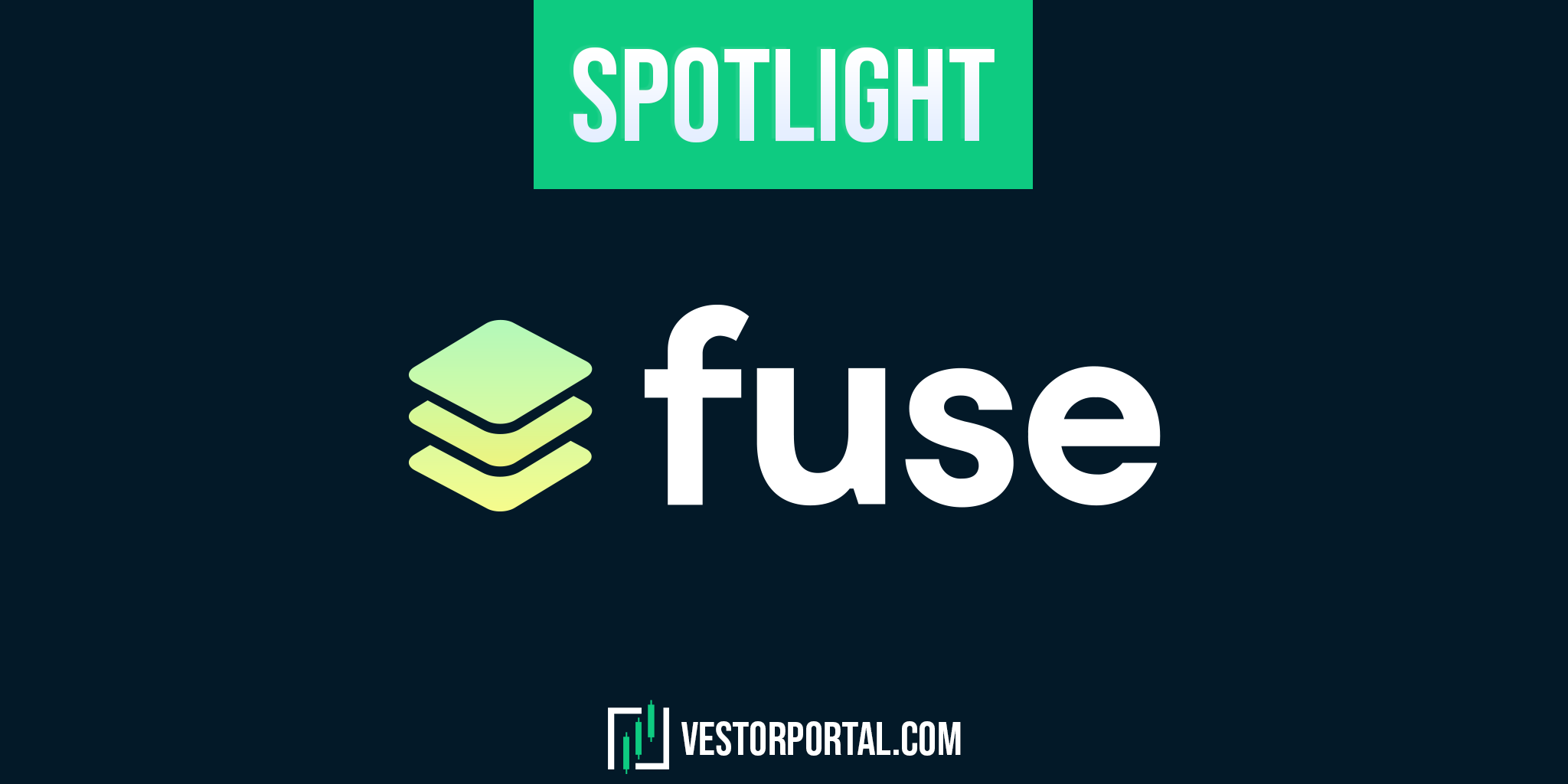Fuse - enabling crypto payments and DeFi for everyone!
Daniil Gorbatenko, Content and Partnerships Manager at Fuse, talks about how Fuse wants to achieve mass adoption of crypto payments and DeFi.

Cryptocurrencies and blockchain-technology are often said to replace or at least compliment the current financial infrastructure we have.
Nevertheless big parts of crypto, especially decentralized finance often have a high barrier to enter.
In this edition of our Vestorportal Spotlight we had the pleasure to talk with Daniil Gorbatenko, Content and Partnerships Manager at Fuse. He further elaborates on Fuse and how they want to achieve mass adoption of crypto payments and DeFi.
Spotlight
What is Fuse?
Fuse is a blockchain-based platform whose vision is to create alternative rails for the global financial system and make crypto payments and DeFi available to the masses. The Fuse Platform consists of three major components.
At the bottom, Fuse is powered by the Fuse Network blockchain. It is a layer-1 EVM-compatible blockchain using delegated proof of stake (dPoS). Fuse Network is fast (5-second block interval) and features low transaction fees.
Secondly, there is an array of tools maintained by the core team enabling projects and users to interact with the chain. These include the Fuse RPC, some key subgraphs, the Fuse Explorer and so on.
The third major component of Fuse is its open-source B2B mobile centric infrastructure enabling corporates to create and manage token applications and onboard users on the Fuse Network blockchain. This includes the Fuse Studio platform backend and the Fuse Whitelabel wallet which has already been used in several successful implementations, including the consumer-facing Fuse Cash wallet.
How did the team come up with the desire to build Fuse?
Several members of the core team, including our founder and CEO Mark Smargon and tech lead Leon Prouger had already worked together before Fuse, notably on the Colu project whose goal was to blend blockchain and local currencies.
While working on Colu, the founding members of Fuse realized that in order to make crypto adoption a reality, a scalable, customized tech stack was needed to make it easy for mainstream actors to integrate crypto into their products and be particularly geared for payments as opposed to serving every possible use case under the sun.
Meet the Team behind Fuse- An Introduction to Fuse's CEO Mark Smargon @smargon!
— Fuse | we’re hiring! (@Fuse_network) April 12, 2022
Dive into Mark's background, previous success, motivations and the story behind #Fuse. https://t.co/Rf5L3WTmLq pic.twitter.com/dpVpJhvFeG
How big is the team building Fuse?
Currently, the core Fuse team has about 20 contributors, with most of the tech team based in Tel Aviv. However, the core team are certainly not the only people building Fuse. Like every major blockchain platform, Fuse is decentralized and open-source and multiple teams are in the process of creating exciting applications to be powered by it.
Who are your most important partners and how do those partnerships look like?
Bringing major partners on board has been one of the core objectives of the Fuse team. The most important infrastructure partners are Pocket Network (for decentralization of the chain access), The Graph (for smart contract indexing), Ramp Network and XanPool (fiat on-ramps), DIA and Chainlink (oracles).
On the DeFi side of things, our most noteworthy collaborators are Voltage Finance and Sushi (all-in-one DeFi platforms on Fuse), Beefy Finance (decentralized yield optimization through auto-compounding) and OpenLeverage (leveraged trades on DEXs). Fuse is also supported by a number of major cross-chain bridge operators, including Multichain, Connext, ChainPort, Allbridge and XP.NETWORK.
Finally, crucial to the long-term success of Fuse are ecosystem partnerships aimed at deploying the Fuse tech to power real-world use cases.
Could you tell us something about Fuse Studio?
The Fuse Studio platform is the core element of our mobile-centric B2B infrastructure that is designed to enable companies and organizations to smoothly launch and manage token-powered applications.
This sounds rather abstract but basically, a client can use the convenient Studio API to create a token on the Fuse Network blockchain, as well as a smart contract and cloud storage environment around it that helps bring the token to life. This includes the possibility of customizing the token emission over time and other characteristics of the token, bringing in merchants who can accept payments made using the token, implementing the token within customer loyalty programs, activating fiat on-ramps for purchasing the token with bank accounts and so on.
This infrastructure has already been used in real-world implementations. Most notably, during the Mystic Valley festival in Thailand in November 2020, the attendees made all the payments using the token-powered application built on Fuse Studio. UK-government supported Peepl project is deploying the platform to disrupt food delivery platforms. Other exciting projects utilizing Fuse Studio will soon be announced, too.
Could you tell us something about the staking option on Fuse?
The Fuse Network blockchain relies on a delegated proof of stake-based consensus mechanism called AuRa. The consensus is maintained by network validators that have to stake at least 100,000 FUSE. Validators can also boost their stake by attracting deposits from users who do not wish to run validator nodes or do not have enough FUSE to stake. Those depositors are called delegators and by joining a validator they receive their proportional share of block rewards minus the 15% fee paid to their chosen validator. Currently, delegators may expect an around 20% APY.
Wondering how you can put your $FUSE to work? 🤓
— Fuse | we’re hiring! (@Fuse_network) March 28, 2022
Check out this in-depth guide to earning #passiveincome on https://t.co/huDENohbpR whilst simultaneously helping govern and secure @Fuse_network.
Article courtesy of @Altcoinbuzzio https://t.co/TeD5sPVvhQ
How would you describe the core values of Fuse?
Fuse’s core vision is to combine, or fuse (hence the name), blockchain technology, APIs and mobile to foster mass adoption of crypto-powered payments and DeFi around the world. Put differently, we see Fuse not as a competitor for Ethereum, Solana or Polygon with regard to the existing, mostly already highly crypto-savvy user base but rather as a major provider of global payment and financial rails, just like Visa, PayPal or Stripe.
Two other important ideas worth mentioning are de-emphasizing direct consumer interactions with the blockchain and the commitment to interoperability. We are convinced that most people will not desire to be their own bank on the blockchain, with the associated risk of losing all their funds together with their private key. They will need the means to benefit from blockchain technology in ways that make them feel safe and comfortable. Just like when they send some money to a friend using Venmo or Revolut or pay with a Visa card at a shop.
We also believe that in the future, no single chain or a small number of chains will be dominant, and we are not trying to outcompete other chains for the title of the biggest world computer. Rather, we envisage a future of multiple smart contract blockchains, including Ethereum, running alongside each other and interacting through effective interoperability solutions.
What differentiates Fuse from other layer 1 blockchains?
Our main differentiator is our unwavering focus on building the B2B-friendly infrastructure enabling real-word use cases. Of course, we are happy to see popular crypto projects and dApps crypto users have grown to expect to see on any respectable blockchain deploy on Fuse.
However, we believe that this alone will increasingly be insufficient for sustainable success and mass adoption. There are so many users and use cases that crypto so far has not attracted and tapped into, and Fuse is one of the projects trying to change that in a major way.
Why are you focusing on mobile-first tools?
There are two main reasons for this. First, people are becoming increasingly used to slick neobank apps like Venmo and Revolut on mobile. If we are to win them over, we have to offer them the same level of user experience or better. They are not coming to crypto for crypto’s sake.
Secondly, crypto payments may well prove to be a genuine game changer for people in many poorer countries that are poorly served by the current financial system for various reasons. In places like sub-Saharan Africa, large percentages of the population are unbanked but almost everyone now has at least a rudimentary smartphone with mobile payment capability. In fact, many unbanked people already use their phones for routine payments or even receiving small loans.
How do you see the current state of crypto payments and DeFi and where do you see the sector going in the coming years?
Currently, crypto payments and DeFi remain overall a province of the crypto-savvy. However, conditions are increasingly forming for this to change.
Perhaps, the two most important elements in this transformation are stablecoins like USDC and fiat on- and off-ramps. Stablecoins have quickly become the main crypto settlement conduit because they have eliminated or at least greatly reduced the price volatility that made people and businesses reluctant to use other crypto assets for payments directly. The last few years have also seen a blossoming of on-ramp options and increasing emergence of off-ramp ones.
We are extremely optimistic about the prospects of crypto payments and DeFi beyond the currently popular use cases as, in our view, they will soon mount a serious challenge to the legacy payment and financial infrastructure.
How do you buy FUSE?
One of the easiest ways of buying FUSE is by using centralized exchanges like Huobi, MEXC Global or Gate.io.
If you do not want to use a centralized exchange you can use a decentralized exchange like PancakeSwap, Voltage Finance or QuickSwap.


